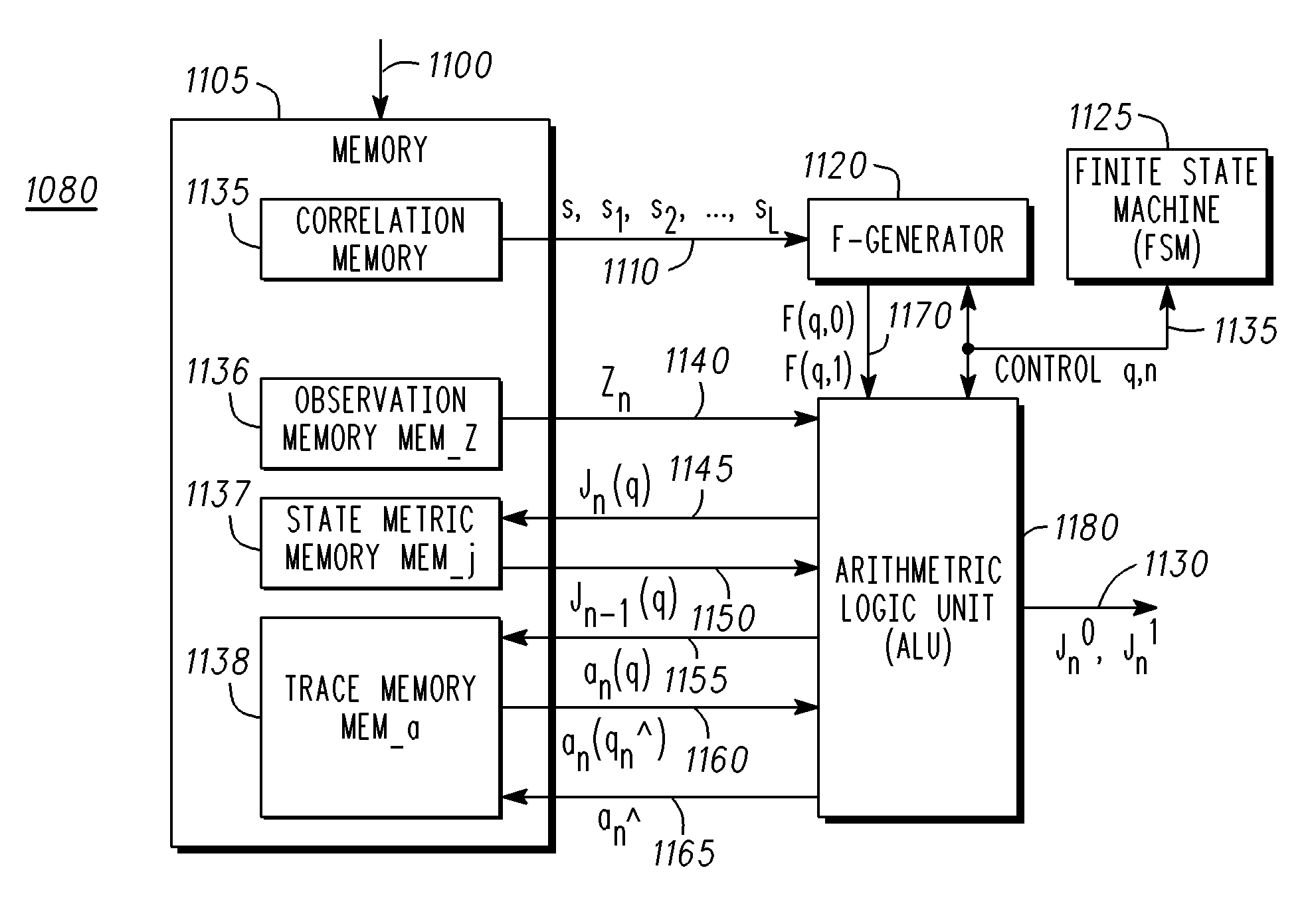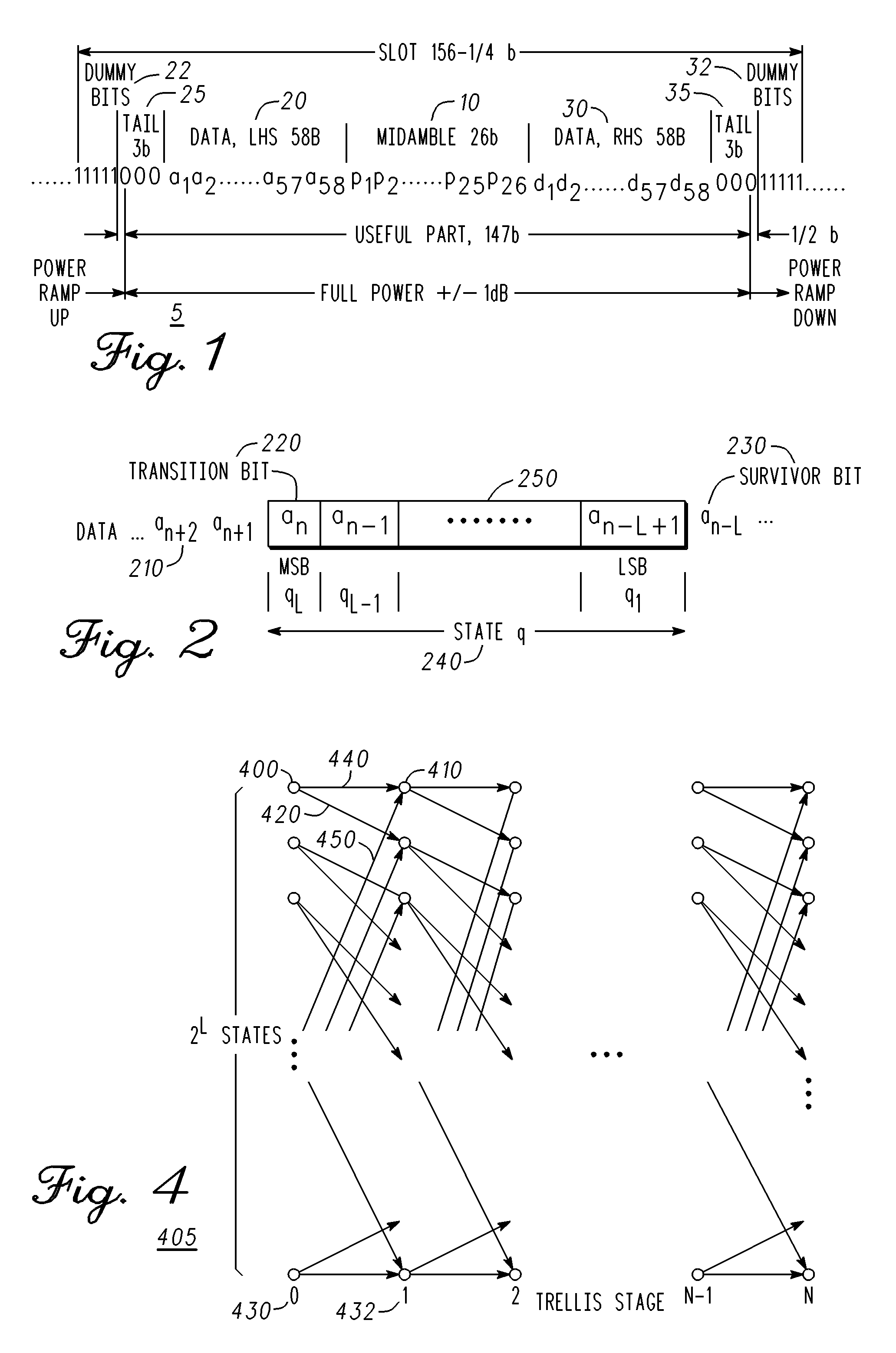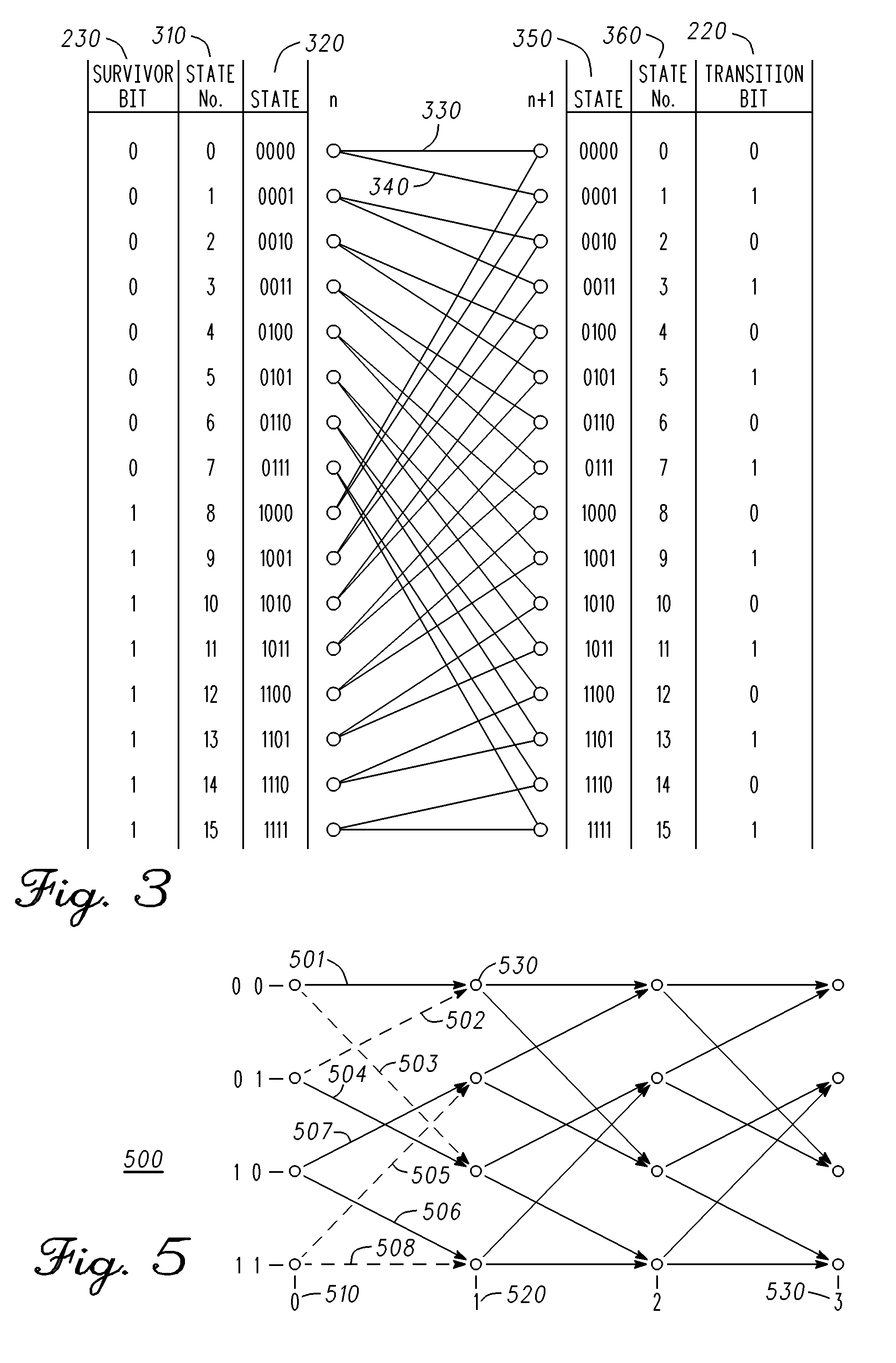Maximum likelihood sequence estimator which computes branch metrics in real time
a branch metric and probability sequence technology, applied in the field of probability sequence estimator which computes branch metric in real time, can solve the problems of large memory, high computational intensity, and large computation requirements of algorithms, and achieve the effect of reducing computations and improving mlse accuracy
- Summary
- Abstract
- Description
- Claims
- Application Information
AI Technical Summary
Benefits of technology
Problems solved by technology
Method used
Image
Examples
Embodiment Construction
[0035]Embodiments of the present invention relate to improvements in MLSEs used in receivers to compensate for intersymbol interference caused by the dispersive nature of transmission channels.
[0036]FIG. 1 is a diagram of a data burst for the GSM standard. The data burst 5 has two data sections, one on either side of a 26 bit midamble 10. The data sections each are 58 bits in length, and are referred to as the Left Hand Side (LHS) data 20, and the Right Hand Side (RHS) data 30. A series of dummy bits 22, and a tail of 3 zeros 25 precede the LHS data 20. A tail of 3 zeros 35, and a series of dummy bits 32 follow the RHS data. The power ramps up and down while the dummy bits are sent, and the power must be constant to plus or minus 1 dB while the tails 25 and 35, midamble 10, RHS 30, and LHS 20 data are sent.
[0037]Once the data burst has been received, the RHS 30 and LHS 20 data may be stored. The midamble 10 is processed to create a model for the channel characteristics that existed ...
PUM
 Login to View More
Login to View More Abstract
Description
Claims
Application Information
 Login to View More
Login to View More - R&D
- Intellectual Property
- Life Sciences
- Materials
- Tech Scout
- Unparalleled Data Quality
- Higher Quality Content
- 60% Fewer Hallucinations
Browse by: Latest US Patents, China's latest patents, Technical Efficacy Thesaurus, Application Domain, Technology Topic, Popular Technical Reports.
© 2025 PatSnap. All rights reserved.Legal|Privacy policy|Modern Slavery Act Transparency Statement|Sitemap|About US| Contact US: help@patsnap.com



